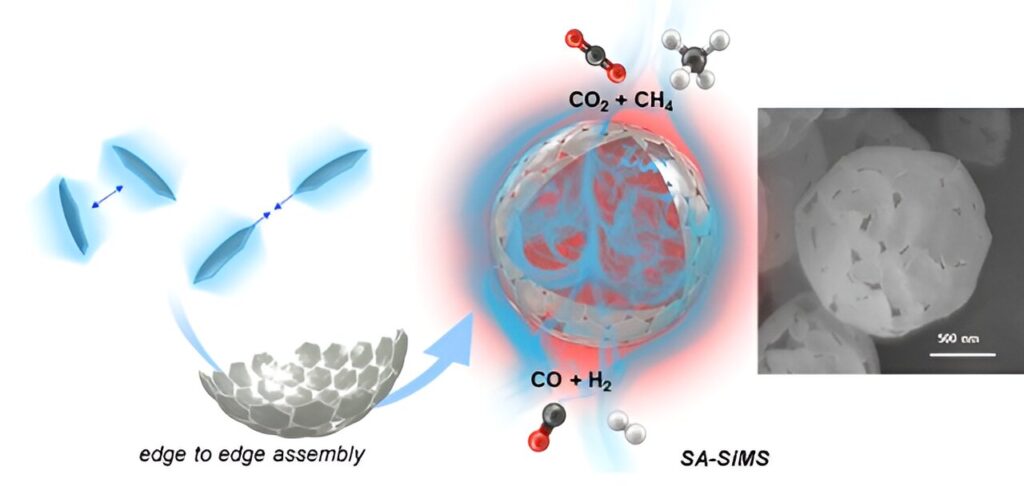A collaborative research team has fabricated a soccer ball-shaped construction using edge-to-edge assembly of 2D semiconductor materials. The research has been featured on the cover of the online edition of the Angewandte Chemie International Edition journal.
The research team, led by Professor In Su Lee and Ph.D. candidate Sun Woo Jang from the Department of Chemistry at Pohang University of Science and Technology (POSTECH), along with Professor Kwangjin An from the Department of Energy and Chemical Engineering at Ulsan National Institute of Science and Technology (UNIST), successfully controlled the interaction between the edges of 2D-silica nanosheets (2D-SiNS) to create a soccer ball-like structure.
The planar structure of 2D nanosheets exhibit unique mechanical and optical properties, making them versatile in semiconductor devices, catalysts, sensors, and many other sectors. The strong attraction of intermolecular forces (van der Waals) between sheets typically results in a structure where faces are in direct contact, compromising mechanical stability for catalytic functionality.
In the study, the research team developed an edge-to-edge assembly technique for 2D-SiNS. In the case of 2D-SiNS, charge distribution varies based on surface curvature or structural characteristics, and typically, the edge region is sensitive to differences in charge distribution.
The research team leveraged this property to induce interactions between the edges of 2D-SiNS. Unlike traditional face-to-face assembly, this technique focuses on the assembly of edges.
This breakthrough allowed the researchers to assemble 2D-SiNS into hollow soccer ball-shaped structures, demonstrating exceptional mechanical stability and durability even under challenging conditions, including high temperatures and various solvents. Moreover, this structure prevented unintentional aggregation of nanostructures and inhibited the formation of coke, which impedes catalytic activity.
Such structural characteristics significantly increased the assembled 2D-SiNS surface area, improving the efficiency of catalytic reactions and facilitating the smooth movement of reactants. Importantly, when subjected to continuous reactions at high temperatures, it demonstrated outstanding catalytic activity and durability in producing hydrogen and carbon monoxide from methane and carbon dioxide.
The lead researcher of the study, Professor In Su Lee, said, “I am delighted not only about the enhanced understanding of nano-scale material assembly but also about our paving the way for the development of stable and functional 2D nanomaterials.”


